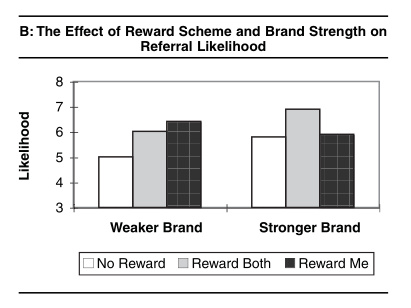In the online marketing and sales world, the idea of a referral program is commonly talked about. In the standard referral program, a person is incentivized to invite a user to join a product. If the person who was invited joins, the original user earns something as a reward.
While this type of referral program does work, you can add a twist to it to make it work better and make your company growth explode.
By using a double-sided referral program, you can unlock far better referral program results.
A double-sided referral program differs from the standard referral program by doing two things:
- Offers a reward for a referral: gives a reward to a person who successfully refers a friend to your product.
- Gives the friend a reward: gives a reward to the person being invited to incentivize him or her to join the product.
Let’s think about why this is so powerful…
In the standard referral program, you might say: “if your friend joins our product, we will give you $10 off your next purchase.”
In a double-sided referral program, you would say: “if your friend joins our product, we will give you $10 off your next purchase AND give your friend $10.”
You can likely see why a double-sided referral program is so powerful from a psychological aspect. Your user doesn’t just get something, but they get to offer their friend a gift. And, as an added bonus, since people love free stuff, the person being invited is much likelier to join your product.
How much should you give away?
Without knowing your internal metrics, this question is somewhat hard to specifically answer. However, we can give you some guidance.
When you begin thinking about a double-sided referral program, you will have to decide how much to give away. Perhaps, if this was a standard referral program, you would give your current user $50. But, with a double-sided referral program, you might consider doing something like giving $25 to the user and $25 to the person who was invited.
To help you decide what to do here, we can look at a 2007 study by Pittsburgh and Korea University.
In the study, 300 mobile phone subscribers at 3 telephone providers in Korea were analyzed.
One of the telephone providers has a very strong market share, while the other two had less competitive shares of the market.
The subscribers were offered the following two choices:
- A one-sided referral program: offered around $50 in free calls.
- A two-sided referral program: offered $25 in calls to both the customer and invited person.
What they found is quite interesting:

They found that offering a reward increases the likeliness of a referral occurring. This is to be expected, so it should be of no surprise that incentives for referring boost referrals in general.
The effectiveness of the referral program also differs based on the relationship between the recommender and the person receiving a recommendation. This is also something that’s pretty intuitive and something that should come as no surprise. This is where a double-sided referral kicks in to benefit your business.
Airbnb used a double-sided referral program to grow
Airbnb created a double-sided referral program that helped them grow exponentially. The company offered $100 to the referrer, while the referred person received a $25 credit.
Uber also used a double-sided referral program to grow
While Uber has launched many different types of referral programs, their double-sided referral program was perhaps the most successful.
The ridesharing company would give the current user $10 to $30, while the current user could give Uber credits to the person being referred. Both people got rewarded.
Now what?
To make a double-sided referral program, you should sit down with your marketing and development team to figure out what is technically possible at your company. Once you understand what is technically possible, you can figure out the economics of your program. When you’re figuring out the economics of your program, make sure that your referral program is sustainable and helping you grow in a way that produces a positive return on investment.
